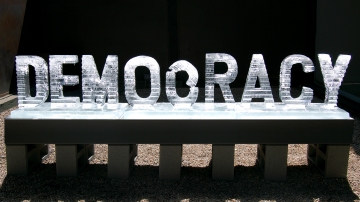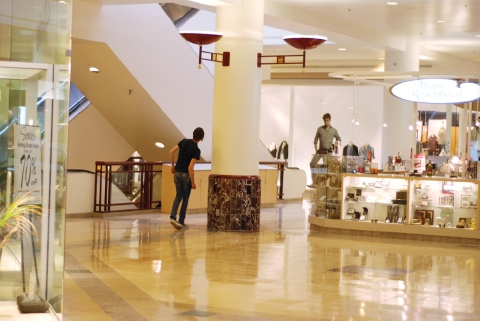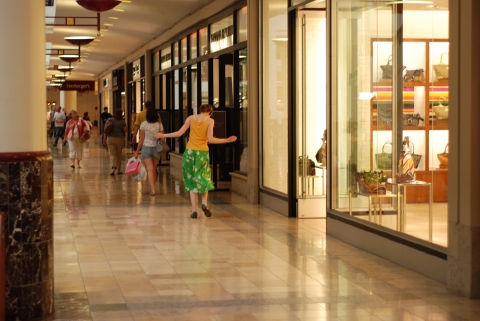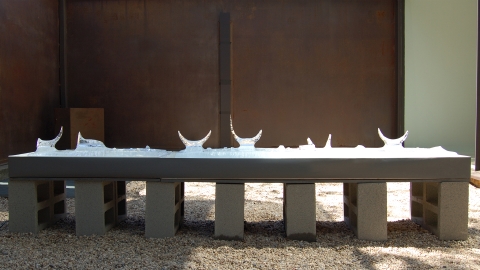FESTIVALS: The Convention, The UnConvention, and the UnUnConvention
Mason Riddle gives a run-down of arts events running in tandem with the Republican National Convention in St. Paul, from the festival offerings of UnConvention to independent, renegade affairs that constitute a sort of UnUnConvention.




This article was originally published in the Twin Cities Daily Planet and is reprinted with permission.
TO THE BARRICADES…OR SOMETHING LIKE THAT. So say the organizers of the UnConvention, the multi-faceted string of cultural activities that is taking place in tandem with the Republican National Convention (RNC) in St. Paul. As forward-thinking and inclusive as the UnConvention proffers to be, though, it isnt for every creative type. In fact, some of the most interesting activities will be independent, renegade affairs that may or may not be noticed. Collectively, they constitute a sort of UnUnConvention.
The UnConvention
The UnCoventioners are taking to the streets, literally and metaphorically. But instead of presenting a scripted, partisan look at the state of the union, the UnConvention, through a range of alternative events and projects ranging from parades to yard signs to video projections to art exhibitions, is applying an aesthetic edge to such abstract notions as democracy and equality.
However, the UnConvention is not the grass roots effort one might expect: its fueled by the muscle of established organizations like Intermedia Arts, the Walker Art Center, the Minneapolis Institute of Arts, the University of Minnesota, Carleton College, the Minneapolis College of Art and Design, and Forecast Public Artworks. The collaboration has morphed from a Minnesota-centric collaboration into a national effort, with some artists and partner organizations coming into town and also instigating events in Denver at the Democratic National Convention (DNC).
But, given this is the art worldwhich usually functions in a political state of blue rather than redwhy play nice and be non-partisan? In part, because most non-profit, 501©3 organizations cannot program partisan events due to their funding sources. (Choosing sides is bad when you are asking for money.) And, in part, because the themes of participatory democracy, free speech, citizenship, and equality transcend the politics aligned with elephants and donkeys. The UnConvention intends to push up against the RNC as a public, freewheeling forum using the power of creativity to reinforce the core values of this country. Everyone is invited to lock arms and walk the talk.
The UnConvention is an umbrella that provides a non-partisan response to the RNC, says Sarah Peters, the Walkers associate director of public and interpretive programs. We are trying to provide something other than what we get will get at the RNC. We need to get past the expected, scripted conversation and look at what participatory politics mean. This is a non-traditional way of getting at the issues.
The UnConvention Web site has mushroomed in the last week and is the most up-to-date source of information. Although St. Paul is the physical site of the RNC, the majority of UnConvention activities will unfold in Minneapolis, due to several factors: the difficulty of procuring activity permits in St. Paul, the fact that most of the participating cultural organizations are located in Minneapolis, and the fact that Minneapolis is the official host site for the media.
Intermedia Arts will be at the heart of the activity during the convention and afterwards, functioning as the UnConventional Gathering Place. It will be the hub for UnConvention partners to convene throughout the convention days and to interact with visiting artists, journalists, and activists. On August 31, Intermedia Arts will host a public reception.
Events of note is the yard sign project My Yard Our Message. Addressing the theme of participatory democracy, 50 designs for political yard signs were selected from an open call and reproduced in three sets, which are now installed in St. Pauls Daytons Bluff and West Side neighborhoods and in Minneapoliss Seward neighborhood. The Liberty Parade, on August 31, is a full-blown art and music celebration traveling down Nicollet Mall to Loring Park in support of democracy and the freedom of expression. Just a jump across the Mississippi from the RNC, the Peace Island Picnic, hosted by Colleen Rowley, will take place on Harriet Island on September 4 and will feature a number of participatory eventsfrom music to kite flying. Its about forgetting the partisan posturing and celebrating the shared values of liberty, freedom, justice, equality and free speech, says Marlina Gonzales of Intermedia Arts.
Spark24 is a 24-hour, round-the-clock performance marathon at Peavey Plaza starting at 5:00 on August 30. The event is designed to showcase the Cities great arts and entertainment scene to the 15,000 media, 35,000 protesters, 5,000 delegates, and 25,000 locals wandering around Minneapolis. The State of Things is a large-scale, temporary sculpture of the word Democracy sculpted from 5 tons of ice by Nora Lignorano and Marshall Reese. The sculpture measures 5 × 20 feet and will be installed on September 1 on the sweeping State Capital building lawn and melt into oblivion over the next 24 hours. According to Gonzales, the work is a testimonial to the impact of eight years of extreme judicial, legislative, and executive actions on the American Democratic institution, from the landmark Bush vs. Gore decision in 2000 forward. (The sculpture was also installed at the DNC in Denver.)
The UnUnConvention
One of the most ephemeral artworks taking place during the RNC outside the aegis of the UnConvention is Dont you feel it too?, a project spearheaded by performance artist Marcus Young and volunteer dancers. It is dancing where dancing doesnt belong, practiced in public and semi-public places such as museums or downtown elevators, explains Young. Acting as individuals and as a collective, the performers catch their audience unsuspecting. Like an invigorating wayward wind, this work of choreography unburdens everyday life, explains Young. During the RNC, Dont you feel it too? performers will premiere a dance near the Xcel Center.
Another under-the-radar event is Genus Elephus, a sometimes-humorous exhibition of paintings, sculpture, and drawings on view at Premier Gallery in Minneapolis. The show features the work of twenty-five artists from across the country who answered the call to portray the noble elephant. Not overtly political, the show is a tribute to the small-eared Asian species of elephant that was named in 1754 by the Swedish taxonomist Carl Linnaeus. The cartoonist Thomas Nast is credited with first drawing the elephant as a symbol of the Republican Party, in a 1874 issue of Harpers Weekly. (The Republican Party now uses the large-eared, African elephant as a symbol.)
Grupo Soap del Corazón, a Latino artists group based in the Twin Cities, put out a call for political posters that will be plastered on telephone polls and buildings across the cities. Conceived by visual artists Xavier Tavera and Doug Padilla, the postering campaign will be a committed partisan effort to highlight the underbelly of Republican politics.
At the Black Dog Café in St. Paul, the Poster Offensive has mounted a non-partisan poster show, with an opening bash scheduled for August 29. Its all about tangible voice, says organizer Jeff Johnson. I really just had to whisper to a few friends that I wanted to do a poster show about peace and democracy, and a tidal wave of creative talent showed up. The real value of a poster is that it is a tangible, beautiful, ownable, artifact of a hopeful, progressive voice.
Then there is True Blue Minnesota, a project instigated by Martha Ballou and Andrew Hine to show the nation that Minnesota is a state of progressives and to underscore that the current Republican administration is acting contrary to the belief system of many. A video project loaded for bear, TB will place two jumbotron video screens within view of the Xcel Center in hopes of sparking a community dialogue during all four days of the RNC. TB has received videos from filmmakers, documentarians, visual artists, musicians, and comedians, as well as ordinary citizens from throughout the U.S., on issues such as the war, health care, labor, the economy, and the environment. The roster includes Phil Donohues Body of War, Robert Greenwalds entire film library including Iraq for Sale, John Cusacks War Inc., Lizz Winsteads Wake Up World, and work by Ed Schultz from Air America.
With all these activities both within and without the UnConvention organizationTwin Cities residents and visitors will have a lot to think about. We want to create a safe, respectful and positive experience for both local artists and activists and anyone visiting the Twin Cities, says Marlina Gonzales of Intermedia Arts.
Doug Padilla isnt interested in playing it safe. Its just too institutional, he says about the UnConvention. Too nicey-nice and too non-partisan. Good for the folks from the suburbs.
About the author: Mason Riddle writes on the visual arts, architecture and design. She has contributed to a number of publications including Artforum, Metropolis, the Star Tribune, and the Pioneer Press, and she is a frequent writer for mnartists.org. She is guest editor for the upcoming Public Art Review #39: Between Rural and Urban, which explores public art in the suburbs.